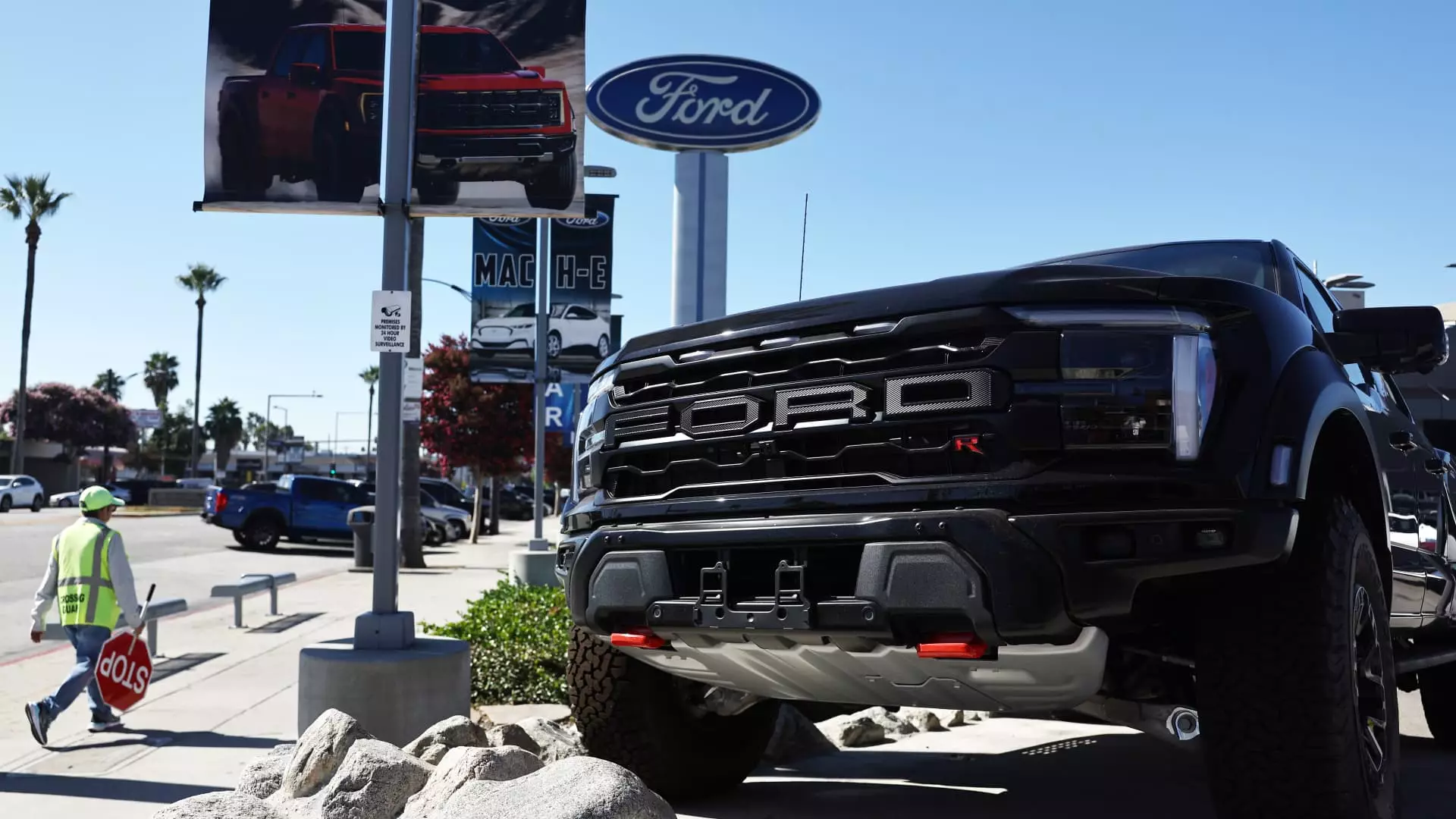The automotive landscape has found itself in a quagmire thanks to President Donald Trump’s aggressive tariffs on imported vehicles. As the clock ticked down to the effective date of a staggering 25% tariff, key players in the industry, particularly Ford Motor Company, were left scrambling to devise a strategic response. This unprecedented move reflects a potential sea change in the dynamics of American manufacturing, raising the question: is the auto industry primed to weather this impending storm, or will it crumble under the pressure?
Ford, in a strikingly proactive approach, opted to launch a consumer-friendly initiative titled “From America, For America.” This program dangles enticing employee pricing directly to American buyers, an act that reeks of both opportunity and desperation. While such programs have historically stirred controversy—sellers often sacrificing slender profit margins to remain competitive—Ford seems convinced that the tides of economic uncertainty make this the right moment to take bold action.
A Dual Strategy: Boosting Sales and National Pride
“Whether it’s navigating the complexities of a changing economy or simply needing a reliable vehicle for your family, we want to help,” Ford’s statement resonated with a sense of urgency and goodwill. This message was not just about selling cars; it aimed to instill confidence in a populace shaken by tariff-induced anxiety. Ford has cleverly framed its commitment to its U.S. operations and workforce as a patriotic undertaking, an attempt to reassure American consumers that their purchases support local jobs and manufacturing.
This narrative isn’t merely a marketing gimmick—it’s a calculated gambit meant to capitalize on current conditions and instill consumer loyalty. With anxiety rippling through the marketplace, Ford’s timely introduction of the pricing initiative effectively portrays the automaker as a champion for Americans, helping them navigate these uncertain times.
But there’s more than just sentiment at stake here. Amid heightened competition, a substantial element of Ford’s rationale rests on the practicality of inventory management. The company is facing mounting pressure to move its existing stock, not allowing outdated vehicle models to gather dust while expensive new ones are on the horizon. By immediately offering deeper discounts, Ford aims to keep its market share intact and perhaps even capture dissatisfied customers from competitors who may not be as agile or willing to lower prices.
Market Dynamics: A Ripple Effect Among Rivals
The reverberations of Ford’s pricing strategy didn’t just echo internally; they sparked a competitive frenzy among rival automakers. Stellantis, for instance, quickly unveiled its employee pricing program in a bid to keep pace, while Hyundai pledged to hold off on price hikes for a minimum of two months. Each company is aligning its actions with the overarching theme of resilience amid uncertainty, showing buyers that they are aware of their fears regarding potential future price increases.
Industry insiders note the importance of this phenomenon. Erin Keating, an executive analyst at Cox Automotive, aptly pointed out that this competitive pricing varies significantly from the expected corporate amnesia in such situations. Instead of retreating and ensuring profits, manufacturers are exhibiting remarkable adaptability—an effort that could reshape how consumer confidence interacts with need and pricing in the auto market.
While Ford’s stock performance remains superior to its competitors, one must wonder if this strategy can yield sustained results in a climate influenced by global economic intangibles. After all, the looming threat of recession is a chilling specter overshadowing even the most robust sales metrics. J.P. Morgan’s recent assessment of increased recession odds from 40% to 60% casts a long shadow, prompting businesses to rethink their fiscal strategies in real-time.
The Gravity of Immediate Consumer Action
The urgency felt by consumers is palpable. As fears mount over potential economic downturns and escalating vehicle prices, buyers rushed into showrooms rather than risk waiting—an unexpected boon for automakers. Surprisingly, record-breaking sales in March against this backdrop suggest Ford’s integrated strategy could indeed be the winning ticket.
The automotive industry thrives on visible and responsive consumer engagement, especially during periods of uncertainty. Buyers, motivated by the prospect of impending price hikes, are now inundating dealerships, and Ford, now regarded as a leader in responsiveness, is well-positioned to benefit from this surge in demand. Ford’s decision not only illustrates shrewd market adaptability but also signifies a departure from traditional corporate reticence towards direct consumer engagement.
As Ford and its contemporaries continue this delicate dance between aspiration and market dynamics, it remains to be seen whether these strategies will yield long-term stability. In this rapidly shifting economic landscape, the boldness to prioritize customer needs could ultimately define the identity of these automotive giants as they navigate through turbulent waters.

Leave a Reply